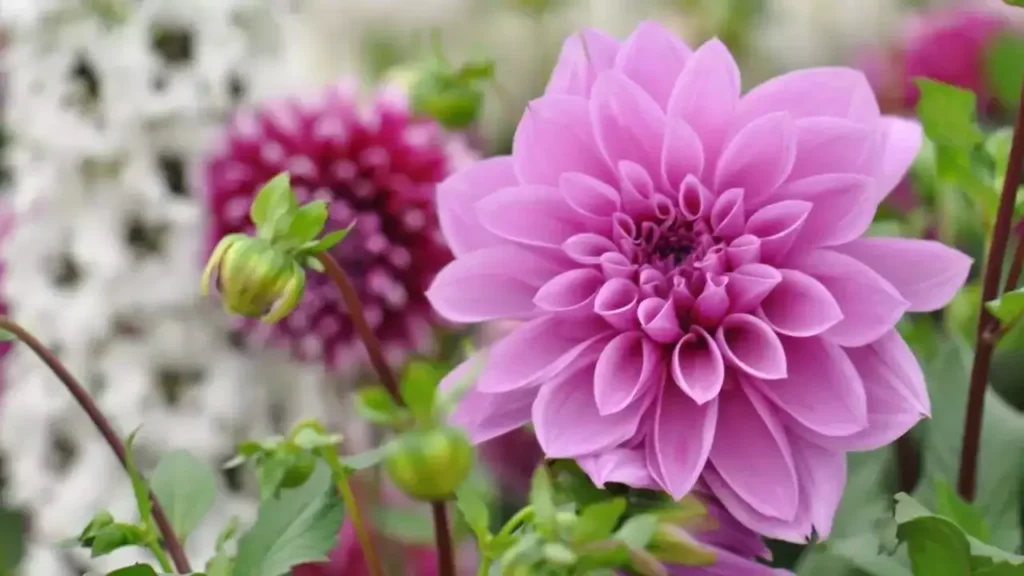Though pruning a rosebush may initially seem trivial to some during the growing season, it is undoubtedly an integral part of gardening. By cutting older stems and taking other steps, pruning will help you tend your rosebush so that it forms stronger canes and beautiful flowers and can withstand diseases or insect infestations. Pruning is the one activity that relates to every gardener, whether you’re a professional or just starting, as it increases the chances of a successful rose garden. Let’s get into the necessary info that encompasses how to prune a rose bush when to trim them, and professional tips that will make the entire process immersive and smooth.
Why Prune Rose Bushes?
Think about trimming as a process where you give your climbed bush the necessary reset that it requires. It resembles getting a hairstyle in the sense that you do not only reduce the scraggly and old parts however instead prepare them for development. Below’s why you would require to prune.
1. Enhances Plant Health
As time passes, increased bushes usually have a tendency to collect dead or unhealthy branches, which gradually end up being power drains for the plant. Trimming resolves this trouble by getting rid of the annoying components to guarantee that the shrub can concentrate simply on plant advancement. It additionally opens the central part of the plant, enabling far better air blood circulation, therefore decreasing the possibilities of fungal infections such as black areas or fine-grained mold from developing. Visualize operating in a center, messy, instead of bought and structured workplace; trimming your plant structurally cleanses it, permitting much better growth.
2. Encourages More Blooms
Stem trimming is one way that can urge a rose shrub to send out new development, which enables stronger shoots to grow. Fresh, energetic canes are excellent precursors to respected blooms. Trim off older ones that are not flower-producing growth, and your bush will place power right into making blossoms rather than sustaining that energy-less development. It is identified with cleaning your storage room and making area for brand-new points.
3. The Plant was Shaped
Not to mention, a bush that exhibits well-pruned roses is more efficient and looks neat. Bushes are shaped so that they can be incorporated into the garden plan, be it a small shrub or a large climbing plant. An unshaped shrub is more uncomfortable to tend to and gather the blooms from. The same is done in sculpting, whereby each cut is a percentage of the entire sculpture, because it is a form of art.
4. The Seasons Were Prepared to Shift
The modification in seasons can complicate points for roses as they need to relocate from one development stage to a period of dormancy. For instance, trimming throughout very early springtime serves as a push to the microorganism, suiting it to start the development of fresh growth. As a matter of fact, however, cutting in the loss a little prepares the organism for snow and severe winter seasons by preserving healthy and balanced walking sticks and disposing of weak or damaged ones. After this cycle, rest assured that your roses will make it through any kind of period. The day for increased trimming is affected by your zone, any type of certain rose selection you are growing, and the month of the year. Obtaining this ideal considerably improves the plant’s metabolic price and can enhance efficiency. right here is a routine on when to cut down
When Should You Cut Back Your Rosegotz Busted?
The timing for when to do more cutting relies on your area, the kind of climbing up plant you have, and the moment of year. Correct timing can improve the plant’s metabolic rate and general development. Below is a routine showing when to cut.
Spring Growwinter: The Time to Attack
Spring is the primary time to prune increased shrubs, as suggested by the look of new development such as small red buds or larger fallen leave nodes. These indicators indicate that it’s time to cut the plant, yet beware not to do it too early to prevent frost damages. Pruning in spring intends to promote healthy development throughout the year.
Maintenance Summer: Ongoing Maintenance
In the summer, it is preferred to engage in light pruning, additionally referred to as deadheading. This practice involves naturally eliminating faded blooms to encourage the plant to maintain generating flowers. It is important to be gentle throughout this procedure, as too much trimming during the can strain the plant while it is proactively expanding. Think about summer trimming as an extra specific method to maintain your roses’ look and efficiency.
Pruning in the Fall: Preparing for the Winter
Pruning is a crucial action in preparing roses for their wintertime sleep after they’ve adapted to the regional microclimate. Nonetheless, over-pruning ought to be prevented as it can trigger undue stress to the plant prior to it goes inactive. Rather, focus on trimming stems as these are most likely to be damaged by extreme winter months weather conditions such as heavy snow or solid gusts of wind. By trimming in the autumn, you’re essentially offering your roses a cozy sendoff right into their wintertime hibernation.
Pruning in Winter: Regions That Experience Appropriate Climate
Locations that experience mild climates in winter season can use late winter cutting to prep for the broadening period. Timing is essential while trimming; there is a high chance the plant is still active and not in change if the fallen leaves have actually not dropped and growth hasn’t nudged. Winter months trimming satisfies of pressing time to prepare the roses for the energetic period post-spring; this is regular during a little warmer regions.
Cutting Back on Your Rose Bushes: Easy to Follow
Cutting can in some cases show up challenging, but with the ideal technique, it can become less difficult and wonderful. Right here is a thorough guide …
Step 1: Tools Required
- Trimming Tools: It is always better to make use of tidy and sharp pruning tools as it makes the cut accurate. Using boring tools would certainly dissuade healing as it might crush the stems.
- Gloves: Usage durable thornproof gloves to make sure the hands are chokepoint thorns.
- Disinfectant Service: A bleach or massaging alcohol service makes sure that conditions aren’t moved when cutting branches on the device utilized.
- Lopper Saw or Lopper: Guarantee any kind of stems and branches that are thick are cut up as just making use of shears would not be able to cut it.
Step 2: Evaluate the State of the Bush
Before starting the cutting process, it is very important to analyze the rose bush thoroughly. Make note of any problems like dead branches, branches that are crossing each other, and areas where there is dense development. You should additionally have a specific shape in mind that you desire to accomplish. Action
Step 3: Clean the Bush of Deadwood and Diseased Wood
It is critical to remove gray, black, and weak stems as these are dead and will certainly not add to new development. Healthy wood will show up moist and eco-friendly on the inside when reduced. Make sure to remove any kind of remnants of diseased stems to prevent them from spreading infection to the rest of the plant.
Step 4: Prune Out Weak and Crossing Canes
If canes on the plant rub against each other, they can create injuries that increase the danger of the plant having conditions. To address this issue, it is suggested to eliminate among the intersectinges. Furthermore, slim and weak walking canes are not with the ability of generating huge blooms and ought to be pruned too.
Step 5: Cut and Form the Bush
While the goal is to achieve a magnificently designed shrub, the primary objective is to produce a much more open, vase-like framework that enables much better air flow and sunlight infiltration to the plant’s facility, which is crucial for healthy growth. Remember to make cuts on outward-facing buds to encourage growth in that instructions.
Step 6: Make Clean, Angled Cuts
Make certain to reduce at angle and around a quarter inch over a bud every time. By doing this, you avoid water from merging at the cut, which can bring about rot. In addition, cutting in this fashion urges growth in the preferred direction for a much more optimum plant shape.
Step 7: Remove Suckers
Eliminating suckers, which are shoots that expand from the rootstock under the grafting factor. These shoots compete for the plant’s energy and must be removed without delay as they show up.
Step 8: Seal Large Cuts
Usage cutting sealant on any type of cuts larger than half an inch to decrease the risk postured to the area that will be revealed to pests and diseases.
Step 9: Clean Up Thoroughly
Accumulate all product that has actually been pruned and thrown out; it is important to clean up as leaving debris at the base of the plant would offer insects and illness with a flourishing location.
Common Mistakes to Avoid
Pruning Too Early
Trimming your plant during a late frost can trigger permanent injury, resulting in necessary to postpone trimming up until the danger of frost has actually passed.
Over-Pruning
Pruning way too much can hurt the plant, so it’s best to prevent removing greater than one-third of its growth at the same time.
Neglecting Tool Hygiene
Make certain to maintain your devices clean to stop spreading diseases to your roses – sanitize them prior to and after pruning.
Conclusion
Cutting rose bushes is a sort of art that different gardeners can learn. If you understand the factors for, the moment to, and the methods of pruning, your increased bushes are predestined for an era of spectacular flowering and considerable growth. Remember, each cut you make is a financial investment in the health and appeal of the plant. With practice, perseverance and the ideal perspective, your roses will accomplish incomparable grace and vigour. When done properly, each and every single cut transforms a yard right into one rich and blossoming.


